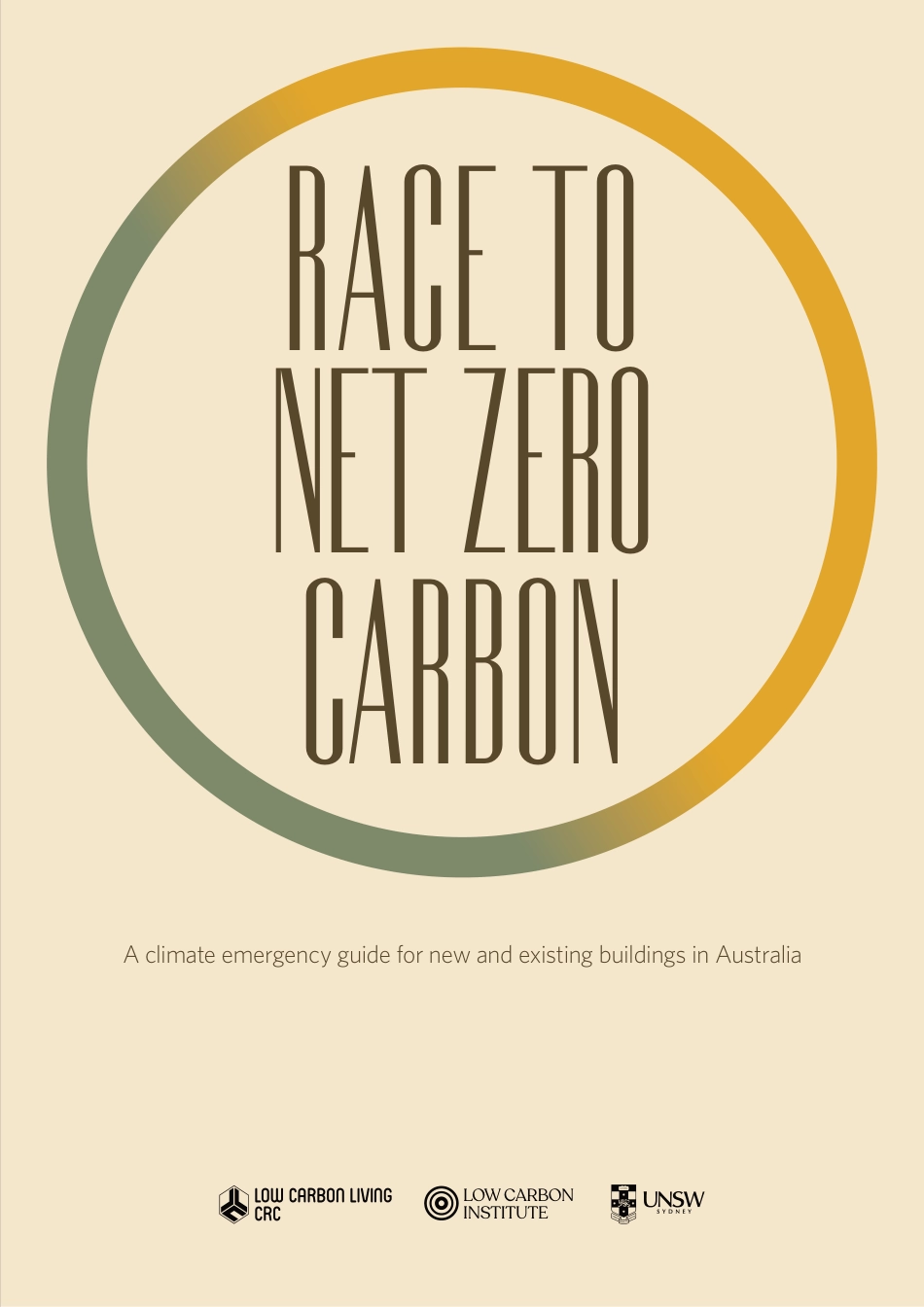A climate emergency guide for new and existing buildings in Australia LOW CARBON INSTITUTERACE TO NET ZEROCARBON3Sub Section headingAcknowledgement of CountryThe authors of this guide acknowledge the Bedegal people, the Traditional Custodians of the Land on which this research was conducted. We pay our respects to Elders both past and present and extend that respect to all First Nations people of Australia.4Authors Deo Prasad, Malay Dave, Aysu Kuru, Philip Oldfield, Lan Ding, Caroline Noller, Baojie HeTitle Race to Net Zero Carbon: A Climate Emergency Guide for New and Existing Buildings in Australia v1b November 2021 (Updated July 2022) Cover The circle, signifying net zero, comprises both embodied carbon (in green) and operational carbon (in yellow), illustrating that both embodied and operational carbon must be considered in a building’s lifecycle. Guide design Jinga DesignThis guide and its benchmarks and targets have been reviewed by industry advisors: Lester Partridge from LCI Consultants, Ian Dixon from GHD and Caroline Pidcock from PIDCOCK. This project also benefited from the data and comments provided by NABERS, Planning Institute of Australia, and Architects Declare Australia, and the review, support and guidance of the Australian Institute of Architects Climate Action and Sustainability Taskforce (CAST) Group. This was a collaborative project undertaken with CAST.This revision (v1b) has benefited from the review and feedback received from GBCA, NABERS, DeltaQ, Strategy Policy Research, and the Australian Department of Industry, Science, Energy and Resources.This guide was funded and enabled by the CRC for Low Carbon Living in the post-CRC phase and published by the Low Carbon Institute Pty Ltd. Th...



